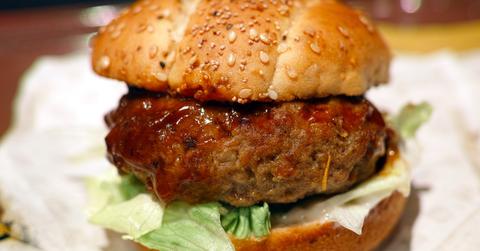Lab-Grown 'Clean Meats' Provide Protein Without Harming The Planet
In addition to offering vegans a way to enjoy all the flavors of meat with none of the guilt, laboratory meat production offers something else: a viable way to feed the world actual meat without destroying the planet.
Updated Dec. 2 2020, 4:14 p.m. ET
To make 20 trillion turkey nuggets, it takes just one little stem cell. That’s the promise of the lab-grown, or “clean meat” meat industry, which has exploded in recent years while also pulling the cost of production down 30,000 times over. But in addition to offering vegans a way to enjoy all the flavors of meat with none of the guilt, laboratory meat production offers something else: a viable way to feed the world actual meat without destroying the planet.
Clean meat harms pretty much nothing.
Clean, lab-grown or cultured meat is essentially meat grown in a petri dish using stem cells from living animals. Developing food in this way removes the need for slaughter, breeding, deforestation, excessive water use and waste associated with the meat and dairy industry. A cell from one animal could produce trillions of cuts of meat, completely doing away with the need for the meat and dairy industry as we now know it.
While vegan and vegetarian meat replacements continue to make strides in their textures and flavors, meat grown from stem cells allows people with a penchant for rib eyes and salmon filets to surrender nothing. Some industry insiders prefer the term “clean meat” as it emphasizes on of the most important aspects of the process, including environmental perks and fewer food-borne illnesses residual drugs.
Right now, lab-grown meat is several times the price of the real thing.
Four years ago, when a Dutch team of scientists (now part of Mosa Meat) was playing around with how to grow a burger from actual cow cells, five ounces of the stuff ran around $325,000. Today, that number sits at $11.36. And falling. Mosa, along with Memphis Meats, Finless Foods, and research institutes like New Harvest, is well on their way to making the eradication of famine within reach, delicious, and harmless to the environment.
And if they can get the price on par with real meat products, we could see a complete change in how we feed the planet.
Industrialized food can be downright dirty.
To make animal-based meat cost-effective, huge volumes of livestock—mainly cows, chickens, and pigs—are often grown in small spaces, making waste and subsequent emissions in large quantities that pollute the air, land, and water while also forcing these animals to live in painful, unsanitary, enclosed spaces totally antithetical to how animals in the wild would live.
Growing the same meat in labs would cut land use by 99 percent, and produce 90 percent less greenhouse gas.
It's only a matter of time.
For all the resistance omnivores have to trying faux meat, the clean meat craze will surely be an easier sell. With the exact same texture, flavor, chemical makeup, and look as meat sliced off a body, affordable meat grown in labs isn’t even likely to garner much notice when it slides onto menus and supermarket shelving.
